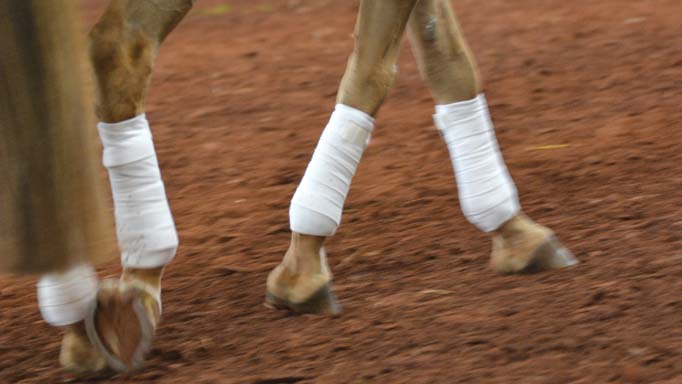As riders, we can never be too vigilant about the way we communicate to our horses. Endless repetition of the same mistake will only reinforce the problem. Improvement will come only through identifying the root of the problem and correcting the aids. Horses do learn from repetition, but being consistent doesn’t mean grinding – the constant repetition of a movement. Practicing a movement correctly creates a learned response in both the rider and the horse.
Starting Slow
An exercise I use often with my students is to have them start working on an exercise they find difficult in the walk, and then introduce the gait that the movement is to be performed in only after achieving the correct positioning for the movement in walk. When riders school the trot half-pass, for example, one often sees too much focus on going sideways, rather than forward. Riders tend to tip forward, pull back on the inside rein and put the outside leg much farther back than is necessary or correct.
The exercise is simple: I have the rider start in walk with the correct position and aids, creating the shape of the bend with a balanced position sideways and forward. Once the rider has the feeling of the movement in the walk, I have her ride a walk-to-trot transition within the half-pass positioning. I often use this same approach to the canter pirouette. The rider gets the right shape of the movement in the walk. She then rides a transition from the walk pirouette directly into the canter pirouette.
It is easier and kinder on the horse to ensure you have the correct shape and balance in the walk. The walk also gives you time to feel any problems, as things often happen too quickly in the canter for the rider to know what has gone wrong. If you are unable to add the gait to the movement from the walk, there is a good chance you aren’t ready for that movement.
Consistent Expectations
Besides developing consistent aids, riders must also create a consistent set of expectations in the horse. One of the most common inconsistencies I see as a coach is the way riders treat the walk “break.” It is common to see riders come back to the walk and immediately drop the reins, letting their horses meander around while the riders have their minds on other things, such as talking to someone in the ring, or even talking on the phone. These same riders are usually surprised and disappointed when they ride the walk tour in a test and find that the horse doesn’t stay in front of the leg and does not give the desired response to picking up the reins at the end of the free walk.
When you ride a transition to walk for a break, keep the horse on the bit for at least ten meters after the transition. Then allow the horse to stretch into the bit as the reins are lengthened. Keep the horse walking in front of the leg throughout the break, rather than letting the horse wander at the pace of his choosing. If you never practice the walk as a working movement, how can you expect your horse to behave differently in competition?

